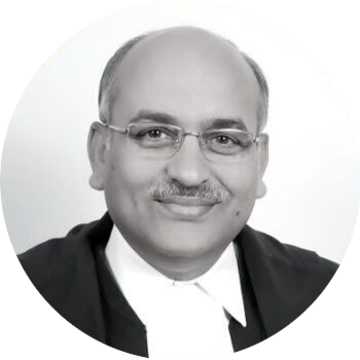Validity of ‘Light Motor Vehicle’ Licence to Drive ‘Transport Vehicle’
Bajaj Allianz General Insurance v Rambha Devi
Citation: 2024 INSC 840
A 5-Judge Bench will decide whether a person licenced to drive a ‘light motor vehicle’ under Section 2(21) of the Motor Vehicles Act, 1988 is automatically entitled to drive a ‘Transport Vehicle of Light Motor Vehicle Class’ with unladen weight of less than 7500 KGs.
Decided
Parties
Appellant: Bajaj Allianz General Insurance
Lawyers: Mr. Siddharth Dave, Sr. Adv.; Ms. Archana Pathak Dave, AOR.; Ms. Vanya Gupta, Adv.; Mr. Kumar Prashant, Adv. Mr. Avnish Dave, Adv.; Ms. Sakshi Mittal, AOR
Respondent: Rambha Devi
Lawyers: Mr. Karthik, Adv.; Mr. Rameshwar Prasad Goyal, AOR; Mr.Anand Sanjay M. Nuli, Adv.; Mr. Suraj Kaushik, Adv.; Ms. Nandini Pandey, Adv.; Ms. Akhila Wali, Adv.; M/S. Nuli & Nuli, AOR
Case Details
Case Number: CA. No. 841/2018
Next Hearing:
Last Updated: July 8, 2025
Key Issues
Is a person holding a licence for a ‘Light Motor Vehicle’ automatically permitted to drive a ‘transport vehicle of light motor vehicle class’?
Did the SC’s 3 Judge Bench overlook key provisions that set different rules for light motor vehicles and transport vehicles?
Case Description
The Motor Vehicles Act, 1988 (MVA) was enacted on July 1st, 1989. Soon after, several State Government transport operators and the general public approached the Union Government stating that the MVA was inconvenient to use. Among other things, they pointed out that the procedure for applying and granting a drivers’ licence was complicated, as the MVA provided various distinct categories of vehicles, and required a separate licence for each.
A Review Committee was constituted to recommend changes to the MVA. The Committee and later the Transport Development Council suggested simplification of procedure and modification of types of vehicles recognised under the MVA. The Motor Vehicles Amendment Act 54 of 1994 (1994 Amendment) was introduced based on these suggestions.
Previously, Section 10(2)(a) to (j) created different categories of vehicles. Medium goods vehicles, medium passenger motor vehicles, heavy goods vehicles, and heavy passenger motor vehicles were distinct categories between Sec. 10(2)(e) to (h). The 1994 Amendment introduced Section 10(2)(e) which created a wide category of ‘transport vehicles’ for these four categories. This removed the need for drivers to get different licences for medium goods and passenger vehicles and heavy goods and passenger vehicles.
In Mukund Dewangan v Oriental Insurance Company Limited, (2017) the Supreme Court was asked to decide if ‘unladen’ transport vehicles under Sec. 10(2)(e) which are less than 7500 Kg would be considered a light motor vehicle under Sec. 10(2)(d). That is, would a person holding a licence to drive a light motor vehicle need a separate licence to drive a transport vehicle which was less than 7500 before any goods were loaded on it. A 3-Judge Bench consisting Justices Arun Mishra, Amitava Roy and S.K. Kaul held that ‘A transport vehicle and omnibus, the gross vehicle weight of either of which does not exceed 7500 kg would be a light motor vehicle’.
In March 2022, the appellants, Bajaj Allianz General Insurance argued that the SC erred in allowing holders of the light motor vehicle licence to drive a transport vehicle. They claimed that the MVA Act created starkly different rules for each. The following provisions of the MVA and Central Motor Vehicles Rules, 1989 (Motor Vehicles Rules) were not brought to the attention of the Court.
-
- Section 4(2): The age of eligibility to acquire a licence for a ‘light motor vehicle’ is 18 (Sec. 4(1)), whereas for a ‘transport vehicle’ it is 20 (Sec. 4(2)).
- Section 7: A learner’s licence for a ‘transport vehicle’ could only be acquired by someone who held the licence for a ‘light motor vehicle’ for at least one year.
- Section 14: While a licence to drive a ‘transport vehicle’ is effective for 3 years, if that vehicle is transporting dangerous or hazardous goods, it will be valid for 1 year. Other licences, including ‘light motor vehicles’ are valid for 20 years.
- Rule 5, Motor Vehicles Rules: ‘Transport vehicle’ licence holders must have a medical certificate issued by a registered medical practitioner. For holders of other types of licences, a self declaration suffices.
- Rule 31 (2), (3), (4) Motor Vehicles Rules: Stipulates different types and duration of training for transport and non-transport vehicles.
The appellants also brought to the attention of the Court that Sec. 3 of the MVA. This provision states that a person may not drive a transport vehicle other than a ‘motor cab or motor cycle’ hired for one’s own use or rented under Sec.75(2) unless the licences specifically permits them to do so.
On March 8th 2022, a 3-Judge Bench of (then) Justice U.U. Lalit, S.R. Bhat and P.S. Narasimha referred the case to a larger bench to review the points omitted by the Court in Mukund Dewangan. The case was listed before a 5-Judge Bench led by Chief Justice D.Y. Chandrachud, and Justices Hrishikesh Roy, P.S. Narasimha, Pankaj Mithal and Manoj Misra. The Bench commenced hearing the case on 18 July 2023.
On 17 January 2024, the Bench listed the case to be heard in April 2024. The Union is expected to have a roadmap for the amendment to Motor Vehicles Act by then. The Bench clarified that if the Union is not ready by 16 April 2024, they would proceed to conclude the hearings in the case.
On 6 November 2024, the Bench unanimously held that though Mukund Dewangan failed to analyse the provisions that distinguish Transport Vehicles and LMV, it gave “due consideration to the important statutory provisions.” They held that holders of LMV licences can drive Transport Vehicles under 7500 kg.





